New Communication Practices in Construction Industry and Maintenance Services
Main impacts
- Improved remote collaboration across construction sites for maintencance work
- Improved problem-solving and knowledge sharing across sites
The situation before Layers
Highlights
Many fields, such as construction, facility maintenance and quality management, are aware of the possibilities that digital technologies could bring to communication, problem solving situations and thus also to workplace learning. Even though gained advantages are clear, the use of technologies on a regular basis is still low. The type of work naturally affects the communication software needs but also work culture, field specific regulations and generation gaps in technology use.
Description
SOAR aimed to improve remote collaboration in construction, facility maintenance and quality management where mobile devices and specifically smartphones are used for communication and a standard tool in most lines of work. Combined with the development of web-based services this has meant an increase in the number of communication and work management systems, which can be used on multiple platforms.
In maintenance services, communication and work management are intertwined on the mobile platform. For instance, a maintenance person is able to operate several facility management systems on his phone. These systems are used to record and track the progress of each service call and the automatic notifications from them are a key source of daily tasks. Many facility automation systems also make notifications of their state to the maintenance operative’s phone. As a result, certain malfunctions can be taken care of before the users of the facility have even registered them. Even if web-based facility management systems reduce the number of phone calls from the clients, they do not completely replace live communication between the client and the maintenance person. Instead of being personally available for all clients, the maintenance person can now use his/her own judgment when giving out his mobile work number.
In the construction trade, a clear advantage of modern mobile technology is the portability of up-to-date digital plans. In that case, workers are able to store the plans on a tablet that can be brought along to the site. In general, the surveyors are more dependent on the versatile use of mobile technology than other non-supervisory employees. Carry-along knowledge has a communicative effect, too: fellow workers frequently rely on the surveyor as a data source, because they know he or she has access to the latest plans. This communication pattern existed before mobile technology - surveyors have been considered to be able to provide other workers with technical information most effectively.
In quality management, quality managers need and use digital technologies on a regular basis. Examples of such technologies are screen sharing, microblogging and video conferencing applications. Compared with construction and facility maintenance, quality managers in technology companies are more eager to try the possibilities that new technologies have to offer “People [here] find everything new interesting — [they] are into trying out all these new possibilities”.
The differences between trades indicate different working cultures but also regulations and practices. For example, employees in technology industry are encouraged to test and try new technologies for working whereas safety regulations may limit the use of technologies in construction industry. However, the construction industry has acknowledged the low degree of adoption of digital tools among the employees and thus attempts to advance good technological practices, that takes safety procedures and meaningful, work-related use of mobile technologies into account, through development projects.
What Layers did
Highlights
We designed and developed a mobile prototype called SoAR, standing for Social Augmented Reality, and tested it in three different real life working environments - construction, facility maintenance and quality management. The aim was to chart what the current communication practices in construction, facility maintenance and quality management were like and how SoAR could improve remote collaboration in these environments.
Description
In order to find out how well SoAR is suited for professional use, the prototype was tested in collaboration with 1) construction, 2) facility maintenance and 3) quality management workers. Data was collected through interviews, job shadowing and on-site testing of the prototype. Getting to know the users and their work helped to find out what the current communication practices in the workplace were like and which specific situations could be handled with SoAR. Usability tests were conducted for understanding how drawing on video view improved remote collaboration and for improving the design iteratively before on-site user testing.
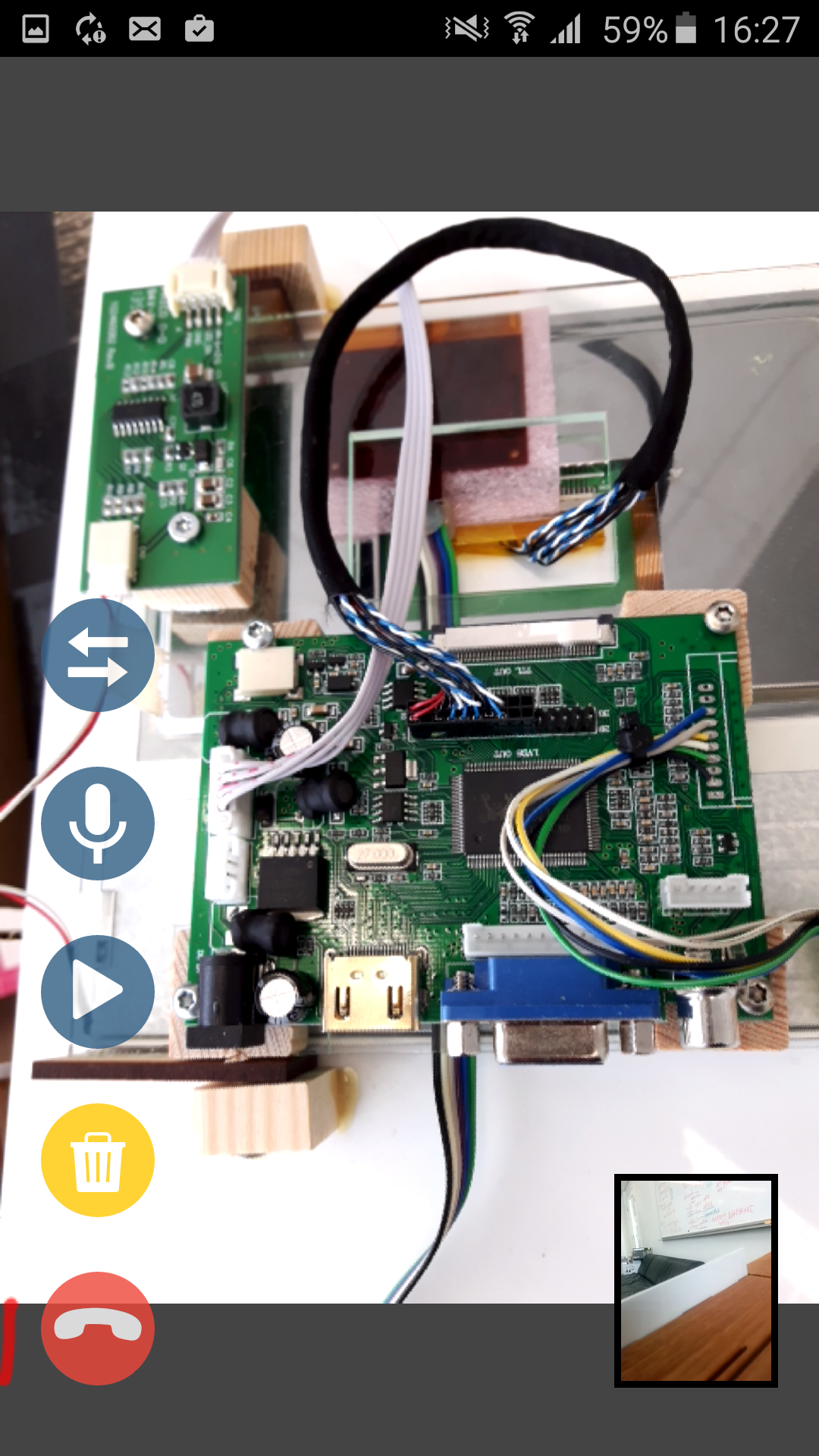
Figure 1: SoAR screenshot
In the construction industry, the field tests were conducted with a construction surveyor and a foreman at a construction site. A construction surveyor ensures that all structures at a construction site are built on the exact locations specified in the construction plan. The surveyor’s tasks included staking out reference points at the site and taking correct measurements using a total station surveying equipment in conjunction with modeling software. The surveyor who tested SoAR was working at a site that was in the foundation phase, and his tasks included measuring and staking out the locations of the footing of the building. He worked in close quarters with a team of carpenters and steel fitters who built the footing molds. Construction foremen were responsible for the division of labour and the overall progress of the construction work. They supervised subcontractors and were responsible for occupational safety, and communicated with construction planners and the superiors in the main contractor company. The foreman who tested SoAR was supervising the interior phase of one of the apartment blocks during the test period.
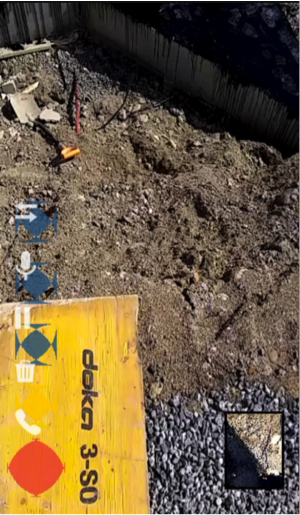
Figure 2: Screenshot from a call at Skanska (the icons are malformed due to the recording feature)
In the facility maintenance services, the field test was conducted with a lobby attendant and a maintenance person who was responsible for a facility. Facility maintenance personnel are typically responsible for taking care of the service calls and routine tasks of facilities located close to each other. The routine tasks include e.g. repairs, taking care of the outdoor areas, taking monthly electricity and water readings and doing security rounds in the facilities. Maintenance personnel receive service calls through several facility management systems and they also operate on the basis of the information received from different building automation systems. Often maintenance persons also work on call for additional service areas.
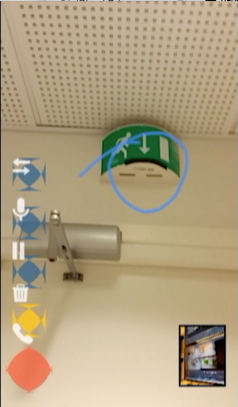
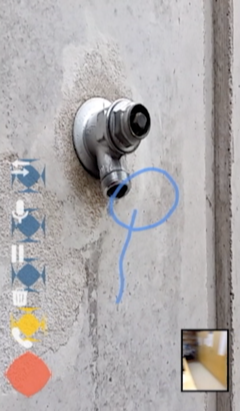
Figure 3: Solving a maintenance issue with SoAR
In quality management, the field tests were conducted with two quality managers who agreed to simulate how SoAR could be used to support remote workshops and internal audits. Quality managers were responsible for maintaining and developing processes and the quality management system of the company, in compliance to standards. This requires audits and inspections, making and ordering reports, organizing training sessions and making for example process descriptions and manuals. Quality managers look into the whole supply chain of products and services, for the corporation and its external suppliers alike. They also lead development projects.
The situation after Layers
Highlights
It was found out that mobile video conversations augmented with an on-screen drawing feature are useful for problem solving and communication in physical work context. The app was found out to be a potential solution especially for acute work situations in all the test environments. It can also be beneficial for improving communication in work processes like quality management and managing supply chains in the construction and facility maintenance sectors. Especially in the terms of communication practices, the field tests provided to the participating organisations new inspiration to digitalize working and learning practices.
Description
The aim of the field tests was to find out whether augmented video calls are useful for problem solving and communication in physical work context. According to the observations and feedback from the tests and interviews, the app provided additional value to the users.
As mobile devices and specifically smartphones have become a standard tool in most lines of work, the SoAR test users have experienced how mobile use has changed work practices. SoAR can hypothetically support and even replace physical presence in many of the problem-solving situations described because it allows for shared viewing and gesturing. However, it is less likely to substitute for live communication, which requires a personal connection based on co-location. All participants acknowledged augmented video conversation as a potentially powerful tool at work, and they could in addition come up with several ideas on how to use it in their own work. Everyone was familiar with at least one existing video call tool and many used Skype for personal communication.
Saving time and money by, for example, reducing the need for immediate presence was a common expectation for SoAR. Although SoAR potentially can make work-related problem-solving faster, the emphasis is rather on improving workplace communication than enabling savings for the employer. The study concentrated on the employees’ point of view: in so much as the employees considered saving time with SoAR essential for making their work more manageable, time was considered an important aspect. Figure 4 illustrates the number of SoAR calls made during pilot studies.
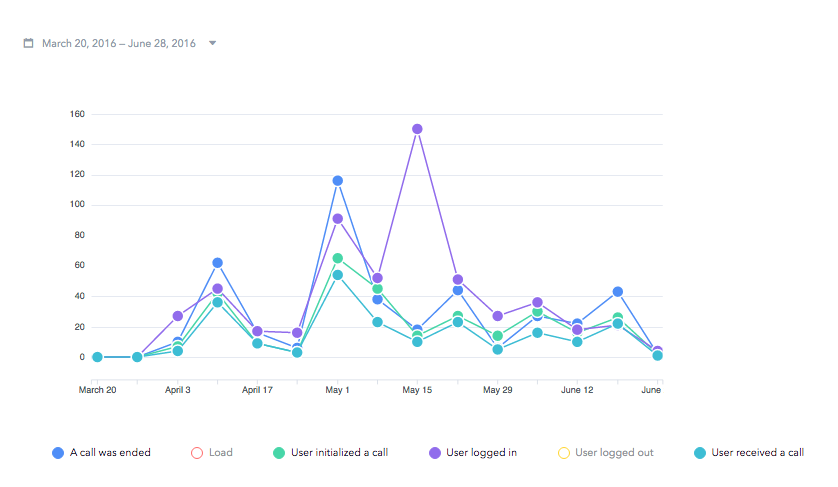
Figure 4: SoAR calls during pilots
Impact that Layers created
Changed learning practices
SoaR introduced new communication practices, such as distant sharing of problem contexts, in the fields of construction, facility maintenance and quality management.
Extended trust building and personal networks
Contacting co-workers and experts requires trust, which SoAR calls on the one hand requires and on the other hand supports.
Enhanced digital competence
The SoAR app was introduced as a new possibility to communicate with co-workers and solve urgent problems. As a new app, it promoted distant communication practices with augmented reality and so enhanced the digital competence of the users who participated in the field tests.
Bridging learning contexts
By using the SoAR mobile app, workers at different location were able to communicate by sharing their working contexts.
Links to other sections
- Tools
- Research methodologies
- Impact cards
- Learning scenarios
Further Reading
Reponen, S. (2016). Social Augmented Reality Application: Enhancing Remote Collaboration in Physical Work Context. Master’s thesis. Aalto University, School of Arts, Design and Architecture, Media Lab.
Pejoska, J., Bauters, M., Purma, J., and Leinonen, T. (2016). Social augmented reality: Enhancing context-dependent communication and informal learning at work. British Journal of Educational Technology, 47(3), pp.474-483. Wiley Online Library.
